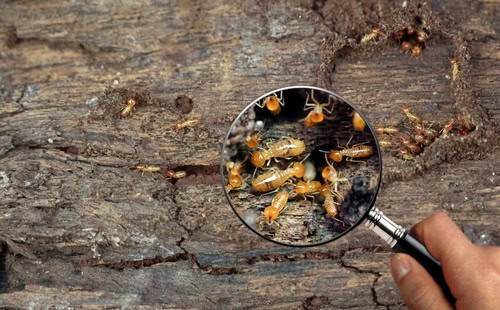
Ants vs Termites: How To Tell Them Apart?
August 15, 2022
Termite Infestation – What Can You Do?
September 19, 2022How Can You Protect Your Home From Termites

How Can You Protect Your Home From Termites? Termites can cause havoc in your home, destroying wooden structures and causing structural damage. They can easily be found in the soil around your home, but it’s impossible to see them with the naked eye.
That’s why you must rely on pest control professionals to monitor for termites and treat your terrain when necessary. If you suspect that you may have a problem, contact a pest control professional as soon as possible.
Protect yourself and your home from termites by understanding the common signs of their presence and treating any evidence accordingly. You may also want to consider having an exterminator assess your home’s risks for a more in-depth solution.
If termites are already present in your landscape, contact the organization responsible for managing that area of land for more information about their treatments.
In some areas, the government may not be responsible for the treatment, but they can provide you with details about who is responsible and what treatment methods are used.
Tips to Protect Your Home from Termites

1. Use treated lumber
You can help prevent termites from entering your home by using pressure-treated lumber for decks, porches, and other areas that cannot be treated with pesticides.
First, check with the company that maintains your landscape to find out what products they use in your area; there are several different types of wood preservatives, and each has its effective life span.
Next, follow the manufacturer’s instructions when you install these products to ensure that they remain effective.
2. Keep shrubs away from the house.
Termites often hide in dense shrubbery around or near homes. Keeping shrubs and tree limbs at least six inches away from the foundation of your home will prevent these pests from accessing the wood that is underneath.
Termite infestation can begin in small areas of your home and become more widespread over time.
By fencing off areas where there are already known infestations and by treating these areas with insecticides, you can decrease the likelihood that these pests will spread from one area of your home to another.
3. Limit wood around the foundation
Termites thrive in moist, warm conditions which are typically found in cracks and crevices along your house’s foundation walls. Limiting the wood surrounding these areas will slow down or prevent active termite nests from forming in your home.
4. Inspect for termite damage yearly
Pest control companies treat qualified homes every three to five years, but you should check your property at least once a year to see if active termites have taken up residence near your home. If you see any damage, do not wait to treat it, or the problem could be worse before you get the help it needs.
5. Keep away from swimming pools and hot tubs

Termites commonly live outside of your home, but they can also attach themselves to the walls and plumbing of a pool or hot tub.
To prevent these pests from contributing to water damage inside your home, cover them with wood chips when you’re not using them and inspect them frequently for any signs of damage.
6. Inspect roofing
Termites often chew through wood shingles and leave behind a trail of fungal spores that can cause rot in your roof. Inspect this part of the roof annually to assess its condition and if termites have taken up residence near it.
7. Protect landscaping plants
It would be best if you inspected would be best if you studied any landscaping plants that are located near your home for signs of termite damage when you perform your annual inspection.
If you see any signs, contact a pest control specialist immediately to treat the plant and prevent termites from attacking your home and the landscape around it.
10. Consider pesticide treatments for the soil around your home
Some pesticides are available that treat the soil surrounding your home to prevent termites from burrowing into it; however, there is no way to ensure that these treatments will be effective after several years, especially if you’ve been using a chemical treatment in the same area for many years already.
9. Keep your home gated and locked
A well-secured home will be less attractive to termites, which can sense the energy of humans that are entering the property. Additionally, termites feel a strong urge to reproduce when conditions are favorable for their survival.
For example, when the wood is present in large quantities or nearby food sources are abundant. Having your home protected with clasps at all entrances and locks on doors will prevent some types of termites from entering your yard.
10. Test and inspect the foundation regularly
An active termite infestation can cause serious damage to your home, and it may be noticeable in a matter of months.
For example, if the woodwork on your home’s exterior is compromised, the moisture from rain or sprinklers can enter your house’s interior through gaps in the wood and cause rot as well as mold and mildew on the floors, walls, and furniture inside.
It would be best if you had an inspection done at least once a year to ensure that you catch these types of problems before they become permanent.
How Can You Protect Your Home From Termites – Conclusion

The above tips are some of the best ways to prevent termites from invading a house. There are also many other ways like relocating waste, checking your gutters, and eliminating any potential pathogens that can cause the pest.
The below to-do lists are some of the steps you can take to prevent termite infestations in your house or workplace




